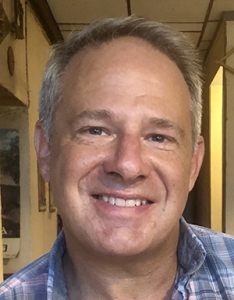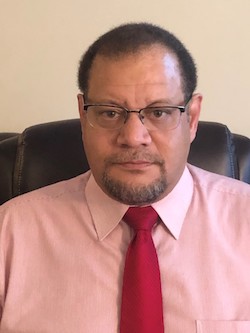Specifically Speaking with John Acosta Security Systems News features the lead security consultant at The Clarient Group, based in Iselin, N.J.

By Paul Ragusa
Updated 1:22 PM CDT, Wed September 16, 2020
 What is your role at the company?
What is your role at the company?
I am the Lead Security Consultant for The Clarient Group (TCG). I design and specify all the security systems required in a project, and work with my teammates to integrate the security systems with other building systems, to the greatest extent possible.
What kinds of systems do you design/specify and what services does the company provide?
I have been very fortunate to be in positions to design the full gamut of security systems both physical and electronic for government, commercial and residential clients.
I believe I am in a very unique position as a security subject matter expert (SME) for The Clarient Group, that designs multiple technologies related to buildings’ infrastructure to enable enhanced building automation. TCG has also taken a leading role in building systems “integration,” before it became a buzz-phrase.
Without regurgitating our website, I would say the one key role/service our company provides that sets us apart from others the most is as a Technology Systems Owner’s Representative. The old adage — “cradle to grave” — is accurate for TCG; many times, our involvement is from project conception, working with clients to develop their vision, and how technology can advance their corporate goals. It’s more of a holistic approach, rather than designing for specific, short-term concerns, current environment or whatever the current trends are in the technology world.
TCG is involved in most vertical markets: Property Management, Education, Government, Entertainment, Manufacturing, Financial, Hospitality, Transportation, Religious and non-profit organizations.
How did you get started in security and designing/specifying?
While in the U.S. Air Force (USAF), I worked with security contractors on USAF security projects from the client’s perspective as the USAF’s representative. After leaving the service, I worked with L-3 Communications as a PM on government security projects, overseeing construction and installation. I also had other projects where I had to write specifications for security systems that were being developed by the government. Finally, I had the opportunity to combine all three: project management, design and specification of security systems into one job — security consultant/designer. I have been very fortunate.
Can you talk about what new or emerging technologies you are seeing or specifying today?
There are so many out there it is difficult to narrow them down. I believe the biggest trend or shift that is occurring is how security is being perceived; it has shifted from being considered an electrical off-spring to being more aligned with IT. This has changed how security designers need to conceptualize their designs, going from the traditional, copper wire, wall-mounted equipment to rack-mounted equipment designs. The use of POE devices, OSDP for more secure communications, smart card technology that can be utilized across various technology systems, not just security, are becoming more in-demand — must haves.
As far as “widgets” and software programs are concerned, the exploration of biometrics to include facial recognition has been popular for the past few years; but, as with most things, they have their advantages and disadvantages. The biggest obstacle I believe biometric technology will have is with privacy concerns. Of course, I would be remiss if I didn’t mention the challenges that are being faced today due to the Covid-19 pandemic.
The security world had already been moving in that direction for a while, mostly for convenience purposes; it is no longer just a matter of convenience, but rather, life safety. This pandemic passing is not a question of if but when, and regardless of when this pandemic subsides, I believe some of the concerns will be here to stay. Security professionals — designers, manufacturers and integrators — need to work toward finding solutions that will alleviate some of the fear associated with physical touching of security devices utilized by large groups of people.
What is your view on the industry moving forward?
The Nostradamus question. As stated, as security becomes more integrated with other non-security systems and IT infrastructure, security designers and security professionals, in general, have to be cognizant of both the physical and logical inter-workings of these systems and the threats posed to them.
Cybersecurity will be what everyone thinks about when it comes to security, however, those infrastructures have to be protected not only from cyber threats but physical threats as well. All the firewalls in the world will not stop someone from physically damaging the IT infrastructure in place or compromising physical security edge devices to hack into a system from within an organization.
Specifically Speaking, a Security Systems News monthly column, features Q-and-A with a security consultant provided to SSN by SecuritySpecifiers.
Comments